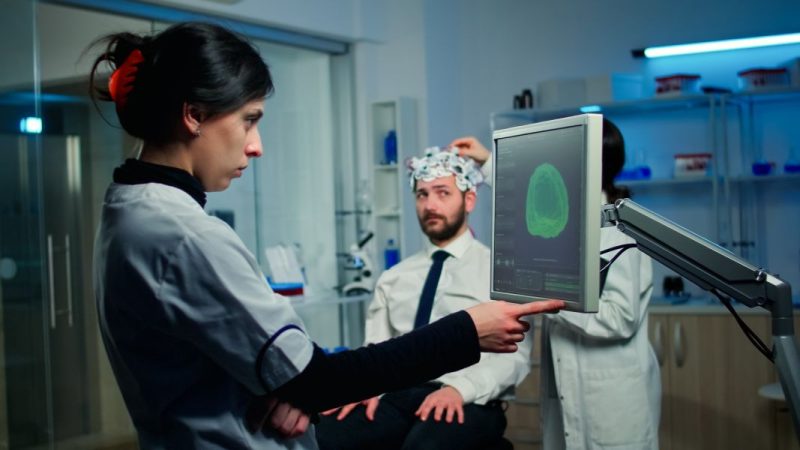How AI And Tech Are Redefining Health, Wellness, And Urban Futures

Categories :
What makes a city truly livable in the age of smart technology? Industry 5.0 is changing how cities work by using smart technology to improve health, transport, energy, and daily life. Smart cities use AI and data to manage traffic, waste, and services more efficiently, making urban life safer and cleaner. Healthcare is also becoming more personal and accessible through telemedicine, AI tools, and health data.
Urban areas are undergoing a major transition as Industry 5.0 begins to shape how cities are planned and managed. This new phase builds on the digital tools of Industry 4.0, such as artificial intelligence and the Internet of Things, but shifts the focus to collaboration between humans and machines The convergence of artificial intelligence (AI), the Internet of Things (IoT), and sustainable urban planning is driving a new era, that merges healthcare, wellbeing, and smart living into the fabric of city life.
A recent study reported a 32.94% improvement in traffic flow when AI-driven systems were used in a city setting. Improved traffic flow helps reduce emissions, cut travel time, and make roads safer. These outcomes support wider goals around health, mobility, and infrastructure efficiency.
Waste collection is also being improved by the use of data and machine learning. AI-led systems are helping cities plan routes and collection schedules more efficiently. According to the same study, waste collection efficiency increased by 5.71% after using AI technologies. These changes support better use of resources and help reduce pollution and waste overflow.
Energy use across cities is another focus area. AI-managed systems have shown an 8.57% reduction in energy usage. By balancing demand and supply more effectively, these systems reduce pressure on power grids and help lower overall consumption. This shift supports long-term goals around resilience, climate targets, and cost savings for both governments and households.
Why livability is key to sustainable urban growth
Livability is a key element of urban sustainability, directly influencing the quality of life experienced by individuals and communities. It goes beyond physical infrastructure to encompass social, economic, and environmental dimensions. At its core, livability refers to the creation of environments that are not only technologically advanced but also supportive of human well-being.
A truly livable environment ensures access to essential services such as clean air and water, safe and affordable housing, efficient public transportation, and reliable public safety. It fosters spaces that encourage social interaction, promote economic participation, and uphold environmental stewardship.
These elements collectively help to reduce stress, support mental health, and build communities that are resilient in the face of economic, social, and environmental challenges.
As urbanisation accelerates across the globe, cities present both significant opportunities and complex challenges for enhancing livability. Urban centres act as engines of economic activity and cultural exchange, offering platforms for innovation, education, and development.
Yet, the rapid pace of urban growth can also bring problems such as overcrowding, pollution, and strained infrastructure. Addressing these requires a holistic approach—one that integrates urban planning, technological advancement, and active community involvement to ensure cities remain inclusive, sustainable, and adaptable for future generations.
How smart cities are redefining livability
As previously discussed, livability encompasses key aspects such as safety, access to healthcare, reliable transportation, environmental sustainability, and social inclusivity.
Smart cities aim to improve these dimensions through the integration of advanced technologies, including real-time data monitoring, AI-driven traffic systems, and energy-efficient infrastructure. The use of the Internet of Things (IoT) enables cities to gather and analyse data that can be used to make urban environments more efficient, responsive, and sustainable.
For instance, smart sensors are deployed to monitor air quality, optimise energy consumption, and detect anomalies in infrastructure. AI-enabled traffic systems are used to manage congestion, adjust signal timings, and improve road safety in real time. These innovations not only modernise city operations but also contribute to building more equitable and inclusive urban spaces.
Through the application of IoT, AI, and big data analytics, smart cities are able to streamline public services, reduce environmental footprints, and improve residents’ daily lives. Notable smart city initiatives include intelligent transportation networks, sensor-based environmental monitoring systems, and the construction of energy-efficient, connected buildings.
Ultimately, the goal of the smart city movement is not only to make cities more technologically advanced, but to ensure they are more liveable, inclusive, and resilient for current and future generations.
Inclusive cities for a sustainable future
Livability plays an important role in helping achieve the Sustainable Development Goals (SDGs), as it directly affects the quality of life and well-being of people and communities. The SDGs focus on big global aims like ending poverty, improving health, and building better cities. These goals match the idea of livability, which means creating places where people can live well and feel supported.
Livable cities are not just modern and high-tech—they must also be fair and inclusive. This means making sure everyone has access to clean water, healthcare, housing, transport, and other basic services. SDG 11 is closely linked to this. It calls for cities that are safe, inclusive, resilient, and sustainable. It highlights the need to build urban areas that improve people’s lives while also solving environmental and social problems.
A key aim of the SDGs is to make access to resources more equal. This links closely to livability. SDG 1 (ending poverty) and SDG 10 (reducing inequality) show that cities must offer equal chances for work, education, and healthcare. Livable cities support this by offering affordable homes, good schools, and decent job opportunities. This helps reduce unfair differences and builds stronger, more connected communities.
Environmental care is another major part of both livability and the SDGs. SDG 13 calls for action on climate change, while SDG 7 supports clean, affordable energy. Livability means cutting pollution, saving energy, and protecting green spaces. These steps help create healthier and more resilient places to live.
Smart city technologies—such as energy systems run by IoT and sensors that track the environment—help cities become more sustainable. These tools help reduce waste, cut pollution, and improve daily life. By planning cities in a sustainable way, we can make urban areas better for everyone and support the wider global effort to fight climate change.
The future of urban well-being through health innovation
Healthcare is a key part of wellbeing. It helps individuals and communities stay healthy and live better lives. In today’s world—especially with the rise of Industry 5.0—healthcare systems need to change to meet the growing and shifting needs of people. This includes caring for an ageing population and managing more cases of long-term health conditions.
Technology is now playing a major role in transforming healthcare. Tools like telemedicine, AI-based diagnostics, and personalised medicine are making healthcare more efficient, accessible, and tailored to each patient.
Telemedicine allows people to talk to doctors remotely, which means quicker care without needing to travel—especially helpful in rural or remote areas. AI-based diagnostics can spot diseases faster and more accurately, helping doctors begin treatment sooner. Personalised medicine uses data about a person’s unique health needs to create better treatment plans, improving outcomes and reducing costs.
Big data is also changing how healthcare works. By looking at large amounts of health information, experts can understand patterns, identify risks, and make better decisions. This helps in tracking diseases, planning public health campaigns, and improving care for whole populations.
IBM Watson Health uses AI to support doctors in diagnosing illnesses, managing care, and making treatment decisions based on data.
Philips combines AI and IoT in telehealth solutions. Their technology helps monitor patients remotely and provides timely support, which is especially useful when hospitals are far away.
Verily, a part of Google, creates smart health devices and tools that collect and use health data to improve care and support prevention.
Ethical innovation for urban wellbeing
As healthcare becomes more digital and data-driven, it is important to think about the ethical and privacy challenges that come with new technologies. Using artificial intelligence (AI) in healthcare, for example, brings questions about data security, patient consent, and algorithmic fairness. If AI systems are not properly managed, they could treat some people unfairly or make mistakes based on biased data.
To build trust in these technologies, healthcare providers and developers must ensure that patient rights are protected. This means using health data responsibly, being clear with patients about how their data is used, and making sure everyone is treated equally.
It is also important to remember that health is not just about medical care. Social factors—like income, education, housing, and the environments people live and work in—play a big role in a person’s health. These are known as social determinants of health.
For example, someone living in poor housing or facing job insecurity may experience more health problems. By addressing these broader issues alongside medical care, healthcare systems can do more to improve the overall well-being of individuals and communities.
Taking this holistic approach—one that combines medical care with support for social and economic needs—helps create a healthier, more inclusive society. It also ensures that as technology grows, it works for everyone, not just a few.

Dinis Guarda is the founder and chief vision architect for citiesabc.com and CEOCreatorAuthor of freedomxcom. He has before created the platforms openbusinesscouncil.org, fashionabc.org, intelligenthq.com, hedgethink.com, tradersdna.com and and IP technologies blocksdna.com, lifesdna.com, iDNA and indexDNA.
With 20+ years experience in international business and digital transformation Dinis Guarda has been a Lecturer and guest Speaker in international business schools such as: Cambridge, Kings College, Copenhagen Business School, INSEEC, Monaco University among others. Dinis is the author of various books. His upcoming book, titled 4IR Magna Carta Cities ABC: A tech AI blockchain 4IR Smart Cities Data Research Charter of Liberties for our humanity is due to be published in 2020. Before that, he has published “4IR AI Blockchain Fintech IoT Reinventing a Nation“, “How Businesses and Governments can Prosper with Fintech, Blockchain and AI?”, also “Blockchain, AI and Crypto Economics – The Next Tsunami?” among others. He was responsbile for over 20 books/ebooks/magazines published in various languages.
Dinis is a serial entrepreneur and CEO / chairman of the companies ztudium / techabc / open business platform. Dinis is involved as a strategist, board member and advisor with the payments, lifestyle, blockchain reward community app Glance technologies, for whom he built the blockchain messaging / payment / loyalty software Blockimpact, the seminal Hyperloop Transportations project, Kora, and blockchain cybersecurity Privus.
He is listed in various global fintech, blockchain, AI, social media industry top lists as an influencer in position top 10/20 within 100 rankings: such as Top People In Blockchain | Cointelegraph and https://cryptoweekly.co/100/ .
Between 2014 and 2015 he was involved in creating a fabbanking.com a digital bank between Asia and Africa as Chief Commercial Officer and Marketing Officer responsible for all legal, tech and business development. Between 2009 and 2010 he was the founder of one of the world first fintech, social trading platforms tradingfloor.com for Saxo Bank. More about him here https://www.openbusinesscouncil.org/wiki/dinis-guarda/









